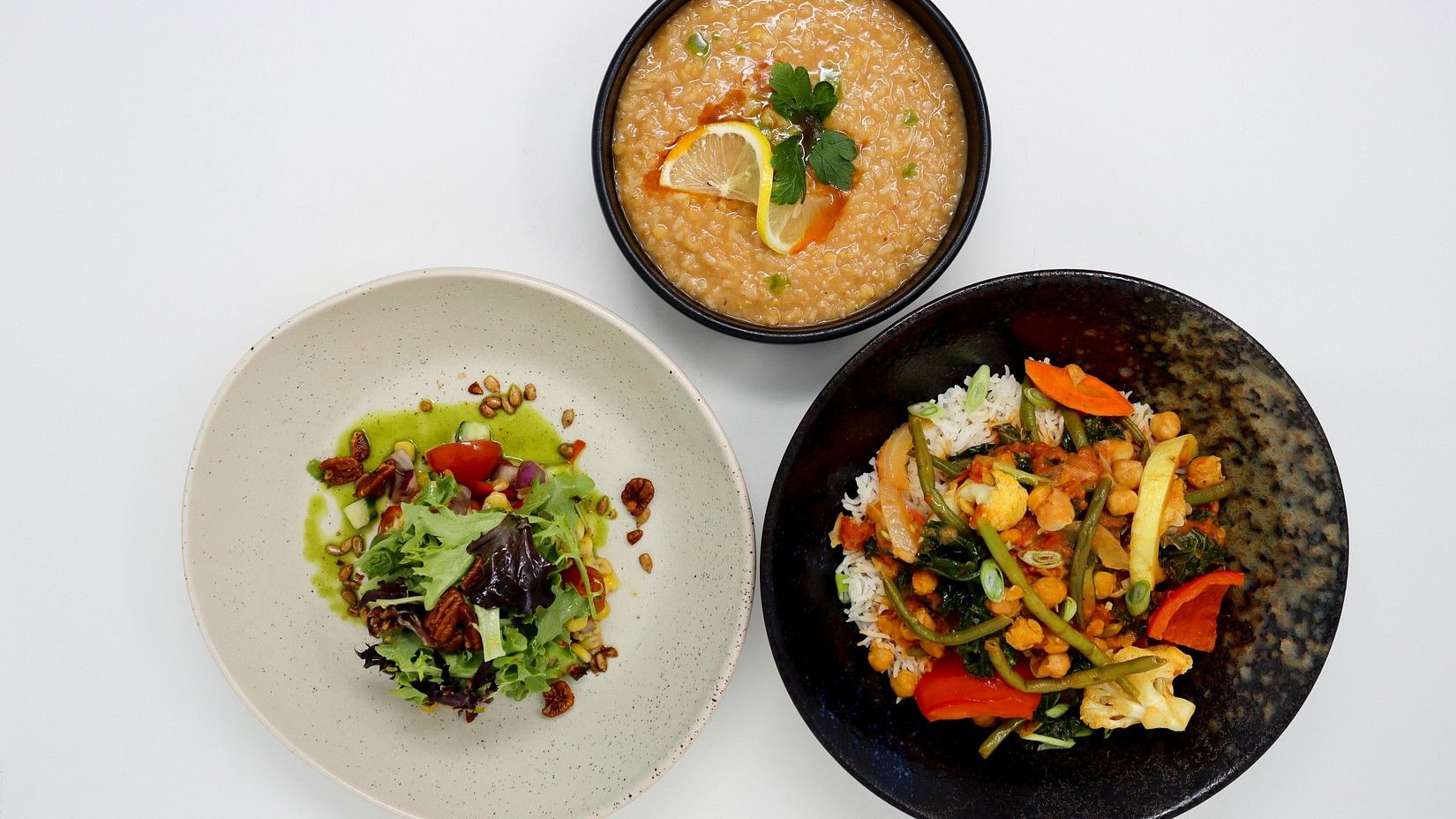- 7 Reasons to Discover Ultimate Serenity with Naturopathy
- Embrace Wellness Winter
- 7 Wellness Tips For Your Longevity
- World Mental Health Day: Essential Insights for Balanced Life
- 5 Ways to Achieve Optimal Digestive Health
- Exploring the Health Benefits of 5 Popular Types of Massages
- How Spas Rejuvenate the Body, Mind, and Soul
- What is Swedish Massage
- Valuka Sweda
- Januvasti
- Annalepam
- Navara Kizhi
- Shiro Vasti
- Udhwarthanam
- Podikizhi
- Pizhichil
- Upanaham
- Merudanda Vashti
- Netra Tarpana
- Greeva Pichu
- Greeva Vasti
- Merudanda Pichu
- What is Ayurveda?
- The Benefits of Practicing Ayurveda
- Ayurveda: An Alternative Medicine
- Techniques and Benefits of Shiro Abhyanga in Ayurveda
- The Ayurvedic Cleanse of Panchakarma
- How Padabhyangam Therapy Heals Your Body and Mind
- Elements in Ayurveda and their Significance
- Live The Tranquil Life
- Detox and Rejuvenate with Acupuncture
- Lifestyle Management with Yoga and Meditation
- A Unique Approach To A Healthy Diet
- Weight Management with Ayurveda
- Wellness Retreats to Celebrate Women's Day
- Best Stress Relief Techniques
- Benefits of Massage Therapy
- 10 Quick & Easy Fresh Juice Recipes
- Everything you need to know about Holistic Health Assessment
- Essence of Yoga
- Why Must You Practice Yoga Regularly?
- The Basics of Ayurveda
- Boost Your Immunity With Naturopathy Amidst The Pandemic
- 5 Ways To Bring Down The Risk Of Seasonal Diseases
- 5 Amazing Tips To Improve Your Immunity
- 4 Everyday Habits That Might Be Harming Your Gut Health
- Reiki: The Healing Touch
- Your Ultimate Guide To Chakra Meditation
- Embrace the Naturopathic Way of Life
- Best Therapies for Chronic Neck Pain
- 4 Things Not To Do After A Filling Meal
- 8 Things That Weaken Your Immune System
- Try These 12 Things to Beat Panic and Stay Calm
- Beat Stress With These Foods During COVID-19
- Diet and Depression: What to Eat, What to Avoid
- Is Depression Keeping You Sedentary? Here is what you can do
- A Low FODMAP Diet For Better Digestive Health
- Want to Increase Sperm Count? Go the Nature's Way
- Home Remedies to Manage your PCOS
- Try Ayurveda to get pregnant faster
- Try Fertility Yoga to Support Reproductive Health
- Should You Ditch Dairy Products For Weight Loss?
- 6 Principles of naturopathy you should know about
- 9 Home Remedies For Digestive Issues
- Ayurvedic Remedies to treat COVID-19
- Importance of Doshas
- Acupuncture: The perfect healing therapy to boost fertility
- Fighting COVID-19 with Ayurveda
- A positive attitude will help you deal with COVID-19
- Practice yoga to boost mental health during COVID-19
- What to do when taking a deep breath just isn't enough
- Four Things To Gift Your Dad This Father’s Day
- Simple Steps To Spend Your 4th Of July Weekend
- 5 Amazing Things to Do During This Fall When You Plan Your Trip
- 4 Therapies for women dealing with stress & anxiety
- Importance of Ayurvedic Treatment in The Modern World
- What is Naturopathy & how does it benefit you?
- 10 Winter Wellness Tips For Your Health
- Weekend Getaways & Health Benefits
- The Importance Of Having Corporate Retreats
- 6 Reasons Why You Should Go To Health and Wellness Retreat
- 6 Habits to Consider in New Years Resolutions
- 5 Tips to Welcome Healthy Spring Season
- 6 Wellness Tips to Reignite the Spark of Love this Valentine Day
- 6 Wellness Tips for Longevity
- Catskills Most Sought Destination for Wellness Lovers
- 5 Springtime Wellness Tips
- How Detoxing Your Body Can Contribute to Your Holistic Wellbeing
- Unlock Secrets of Longevity with Spring Rejuvenation
- World Health Day: 6 Ways To Embrace The Power of Good Health
- Things To Do Around The Bethel Woods Center of Arts
- 5 Healthy Habits to Attain Longevity
- Mother's Day Give Her Gift of Wellness
- How To Deal With Anxiety and Depression
- Yoga For Beginners
- How to Make the Most of International Yoga Day
- Benefits Of Shirodhara Therapy To Restore Your Wellbeing
- Stress Taking A Toll On Your Health?
- How a Wellness Retreat Can Help You Get Through Panic Attacks
- Elevating Your Mind, Body, and Soul with Effective Wellness Prog
- Unlock the Secret to Restful Nights: YO1's Insomnia Management P
- Tips for a Healthier Labor Day Weekend
- Why Choose a Wellness Retreat Over a Typical Holiday
- 5 Ways to Unlock Optimal Health and Wellness
- World Vegetarian Day Health Benefits
- Catskills Resort Perfect Wedding Venues
- Stress Management Program for Mind Body
- Role of Healthy Diet in Longevity
- Enhancing Couple Wellness this Valentine Day
- 6 Anxiety Management Tips
- Wellness Benefits of Spa Treatments
- Womens Wellness Retreat A Step by Step Guide
- Weight Management Why It Matters
- Tips for Spring Season
- Self Care Simple Strategies
- 7 Spring Season Foods to Boost Health
- How Yoga Can Improve Physical and Mental Health
- Top Natural Remedies for Spring Allergy Relief
- How Hydrotherapy Impact the Mind and Body
- Tips For Managing Daily Anxiety and Stress
- Celebrate International Yoga Day with Top 10 Yoga Poses
- 10 Nutritious Foods to Manage Type 2 Diabetes
- Meditation Techniques to Calm Anxious Mind
- What to Expect During the Ayurvedic Detox Program?
- Top 10 Benefits of Acupuncture Therapy
- What to Expect From Your First Yoga Retreat
- YO1 Resorts Featured in Smile 2 Movie
- Bethel Woods Center for the Arts: All You Need to Know
- Everything You Need to Know About Deep Tissue Massage
- Ways to Celebrate Labor Day
- Best Wellness Resorts in Catskills New York
- 5 Common Myths About Weight Management
The management of Type 2 diabetes calls for a combination of physical exercise, weight maintenance and a balanced diet full of nutrients. A diet containing nutritious foods might manage blood glucose, lower the risk of diabetes and boost health.
In this blog, we’ll discuss 10 nutritious foods for Type 2 diabetes.

Top 10 Nutritious Foods for Type 2 Diabetes
1. Leafy green veggies
Leafy green veggies are brimming with nutrition and extremely low in calories and carbs. Some examples are spinach, collard greens, Swiss chard and kale. These vegetables are loaded with vitamins, minerals and antioxidants which protect the eyes from macular degeneration and cataracts, frequent diabetes problems.
Why is it nutritious?
• Rich in fiber which delays sugar absorption
• Rich in Vitamins A, C and K
• Include antioxidants (lutein and zeaxanthin) for healthy eyes
2. Fatty fish
Fatty fish consists of herring, sardines, mackerel, and salmon which have omega-3 Fatty acids. Omega-3s possess anti-inflammatory properties - essential for managing diabetes - simply because chronic inflammation worsens the illness and creates complications.
Why is it nutritious?
• Rich in protein, it fills you up a lot longer and curbs your cravings for more
• Omega-3 essential fatty acids lower inflammation and also boost heart health
3. Nuts and seeds
Nuts and seeds tend to be food items which offer fiber, protein, and fats. Almonds, chia seeds, walnuts, flaxseeds and pumpkin seeds tend to be excellent options for Type 2 diabetes.
Why is it nutritious?
• High in fiber, which controls blood sugar
• Include healthy fats that bring down bad cholesterol (LDL)
• Provide magnesium to control blood sugar
4. Whole grains
Unlike refined Grains, whole Grains contain all components of the grain kernel. Examples are oatmeal, quinoa, brown rice, whole wheat and barley.
Why is it nutritious?
• High in fiber - slows digestion and also prevents blood sugar spikes
• Vitamins, nutrients, along with antioxidants abound
• Help raise insulin sensitivity
5. Legumes
Other fibrous foods great for Type 2 diabetes include beans, chickpeas, and lentils. They have a low glycemic index, meaning they raise blood glucose gradually and more steadily.
Why is it nutritious?
• High in protein and fiber to curb appetite
• They might contain complex carbohydrates which are gradually digested
• It's rich in iron, potassium and magnesium
6. Berries
Berries are sweet but low in sugars and loaded with fiber - a great fruit option for individuals with Type 2 diabetes.
Why is it nutritious?
• Filled with antioxidants and fiber
• Low glycemic index for much better blood glucose management
• Vitamin K and C, manganese and various other nutrients are found
7. Greek Yogurt
Greek yogurt is a high protein, low carbohydrate milk product helpful for Type 2 diabetes management. It packs more protein and fewer carbohydrates compared to regular yogurt.
Why is it nutritious?
• High in protein - helps keep muscle mass and fill you up much longer
• It contains probiotics to help gut health and insulin sensitivity
• Plain varieties are lower in sugar, avoiding blood sugar spikes
8. Avocados
Avocados provide monounsaturated fats which boost heart health and insulin tolerance. They also are loaded with fiber and have extremely little carbs.
Why is it nutritious?
• High in fiber, helps control blood sugar
• Fats which support heart health tend to be plentiful in these types of foods
• Include vitamins C, E, K along with several B vitamins
9. Sweet potatoes
Unlike regular potatoes, sweet potatoes have a low glycemic index and are filled with fiber, antioxidants and vitamins.
Why is it nutritious?
• Reduced glycemic index, smaller spike in blood sugar
• Fiber supports digestion and blood sugar control
• It is high in vitamin A (for vision and immunity)
10. Cinnamon
Cinnamon is not really a food per se, cinnamon is a flavorful spice which appears to enhance insulin sensitivity and bring down blood glucose.
Why is it nutritious?
• Contains antioxidants which inhibit oxidative stress - a major reason for diabetes complications
• Has anti-inflammatory properties
• Can raise insulin sensitivity and bring down fasting blood glucose
• Try Including These Nutritious Foods In Your Diet

Tips on how to consume these nutritious foods every single day to manage Type 2 diabetes
• Plan Balanced Meals: Make meals containing lean protein, good fats, and complex carbs. As an example, mixed greens, grilled salmon, and avocado on a salad with mild vinaigrette.
• Snacking Smart: Snacking on protein and fiber - try Greek yogurt with berries or maybe a few almonds. These choices keep blood sugar levels stable between meals.
• Portion Control: These are healthy foods but portion controlled. Actually, recognizing that you are consuming healthy foods can result in excess weight and high blood glucose.
• Fiber-Rich Breakfast: Begin the day with whole cereals and protein-like oatmeal, chia seeds and blueberries - from breakfast.
• Keep Hydrated: Consider drinks like green tea extract (which has antioxidants) or simply water with a little lemon. Avoid sweet drinks which spike blood glucose.
• Spice it Up with Cinnamon: Add cinnamon to your first-morning coffee, oatmeal, or smoothie for a sweet way to regulate your blood sugar.
• Experiment with Recipes: Try new recipes using these healthy foods. As an example: prepare quinoa salad with diced vegetables and lemon-tahini dressing or bake sweet potato fries as a side dish.
Conclusion
Managing Type 2 diabetes doesn't mean cutting out flavor or enjoying meals. By including several of these nutritious foods in your diet, you are able to manage your blood sugar, better your health, and stay away from numerous diabetes complications. Always speak with a healthcare professional or registered dietitian to develop an individual eating plan for your lifestyle and needs. With the correct strategy and focus on nutrient rich foods, managing Type 2 diabetes could become a sustainable and healthy part of your life.
Explore the health advantages by enrolling in our Diabetes Type II Management program at YO1 Longevity and Health Resorts. Discover our array of offerings, including nutrition, health, and yoga programs, designed to enhance overall well-being and promote a healthy lifestyle.
FAQ's
Q1. Why are leafy greens suggested for Type 2 diabetes?
A1: Green veggies are suggested for managing Type 2 diabetes and include collard greens, Swiss chard, kale, and spinach, which happen to have a low caloric content and high nutritional profile.
Here's how they are helpful:
High in Fiber: They're also high in fiber - a substance which slows the absorption of sugars to the blood stream. This could avoid sharp rises in blood sugar.
Vitamins and Minerals abound: They provide vitamins A, C, and K, and nutrients which support health.
Antioxidants: Leafy greens are loaded with zeaxanthin and antioxidants lutein to withstand oxidative stress and minimize the risk of diabetes complications including cataracts and age related macular degeneration.
Q2. How do fatty fish assist in controlling Type 2 diabetes?
A2: Fatty fish like salmon, mackerel, sardines and herring are great for Type 2 diabetes:
Rich in Omega 3 Fatty Acids: These healthy fats lower inflammation, which is crucial since chronic inflammation is able to worsen diabetes and produce complications.
Protein - High: Fatty fish has quality protein which controls appetite and also offers satiety, decreasing the danger of eating too much.
Better Heart Health: Omega-3 essential fatty acids also lower the risk of heart disease - a frequent issue in diabetes.
Q3. Why are nuts and seeds recommended as nutrient food for diabetes management?
A3: Nuts and seeds like almonds, flaxseeds, chia seeds, walnuts, along with pumpkin seeds tend to be superfoods for Type 2 diabetes as :
High in Fiber: They regulate blood sugar by slowing digestion and releasing glucose.
Healthy Fats: Nuts and seeds offer polyunsaturated and monounsaturated fats which decrease bad cholesterol (LDL) and also boost cardiovascular health.
Rich in Magnesium: They supply magnesium, a mineral that helps manage blood glucose and boost insulin sensitivity.
Q4. Why are whole grains great for Type 2 diabetes?
A4: Oats, quinoa, brown rice, barley and whole wheat are helpful and healthy for Type 2 diabetes:
High Fibre Content: Fiber in whole grains slows digestion and also stops quick surges in blood sugar.
Low Glycemic Index: They're lower in glycemic index compared to refined grains and thus better suited for blood glucose management.
Nutrient-Dense: Whole grains have vitamins, nutrients, and antioxidants which support good health and insulin tolerance.
Q5. How can legumes help control Type 2 diabetes?
A5: Legumes like beans, lentils and chickpeas are great for Type 2 diabetes for the following reasons:
High Protein/High Fiber: They provide protein and fiber to curb appetite and keep stable blood sugar.
Complex Carbohydrates: The carbs in legumes are gradually digested, therefore blood sugar levels rise gradually instead of dramatically.
Low Glycemic Index: Legumes have a tendency to be lower in glycemic index, which helps keep stable blood glucose.
GET IN TOUCH
Please take a moment to fill out the form below with your contact information. A YO1 Longevity & Health Resorts representative will reach out to you with additional information.















